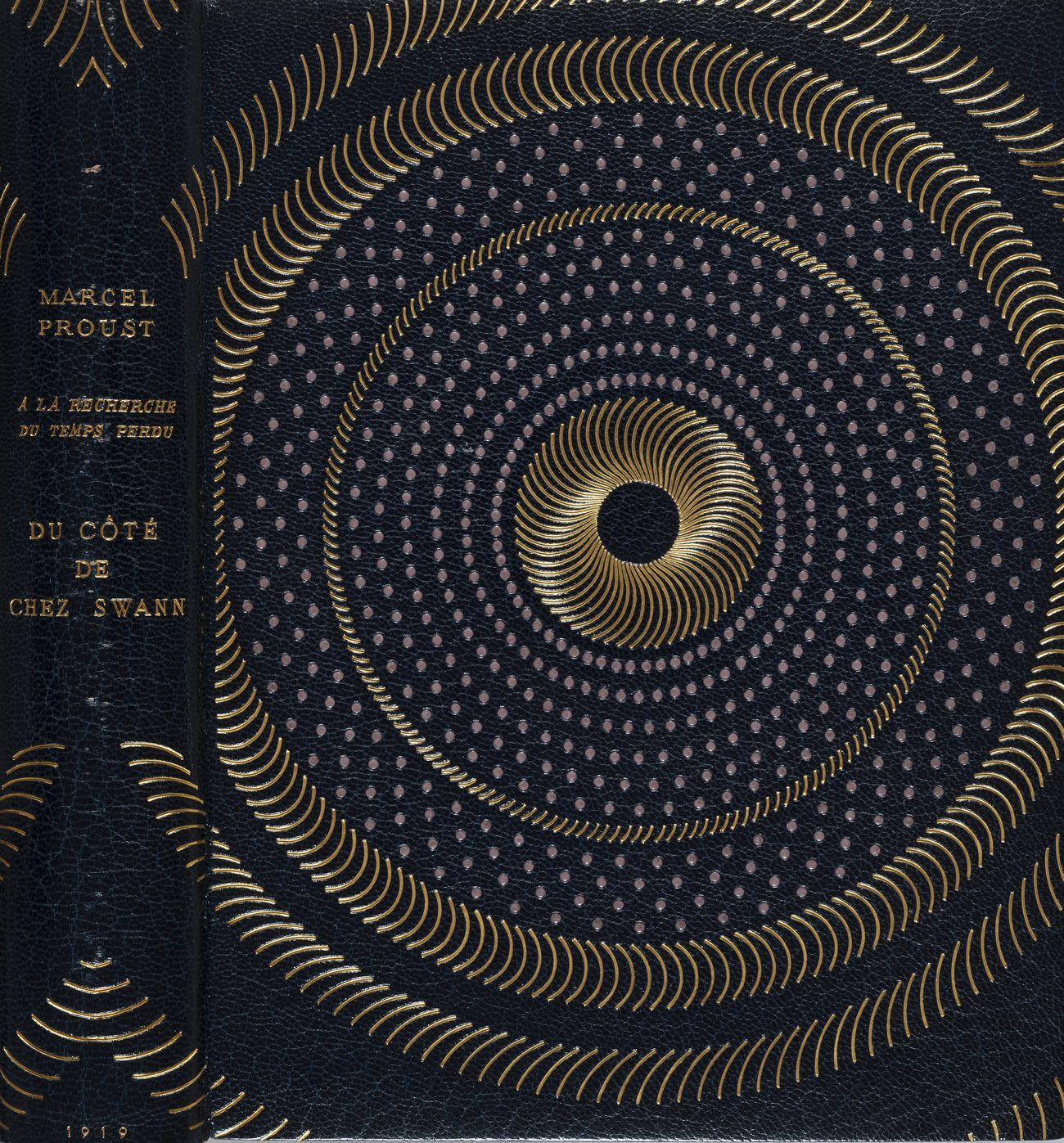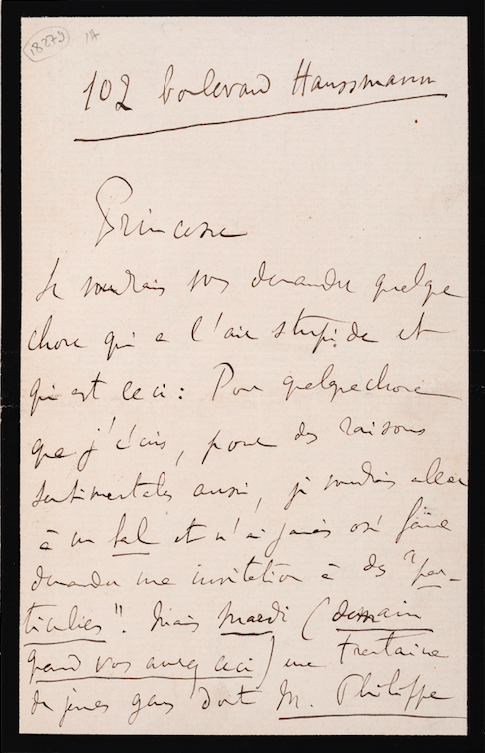À la recherche du temps perdu
Marcel Proust
1913-1927
Paris
4to (220 x 175 mm)
Legatura del 1951 firmata da Paul Bonet
in marocchino blu con decoro «irradiant» e
concentrico a ferri dorati e punti mosaicati blu,
rossi o marroni che ricoprono i piatti e i dorsi,
differenti in ogni volume. Prima edizione di
questa serie completa de À la recherche du temps
perdu, a eccezione del volume 1, Du côté de chez
Swann, pubblicato per la prima volta da Bernard
Grasset nel 1913 e qui nella prima edizione
di N.R.F. L’opera è impressa su carta vergata
Lafuma-Navarre. Esemplare n. XXXV sui C previsti
per questa tiratura dedicata «Aux Bibliophile
de la Nouvelle Revue Française». All’interno dei
volumi sono state rilegate 8 lettere autografe di
Marcel Proust per un totale di 54 pagine.
N.R.F.
Parigi
Catalogue N.
Inv.
Provenance
Marcel Proust, À la recherche du temps perdu, N.R.F., Paris 1919-1927, 13 vols.
Blue Morocco binding dated 1951 and signed by Paul Bonet with “irradiant” and concentric decoration of gilded horseshoes and blue, red and brown mosaic dots that cover the boards and spines, differing on each volume. First edition of this complete series of À la recherche du temps perdu, with the exception of volume 1, Du côté de chez Swann, published for the first time by Bernard Grasset in 1913 and in the first edition by N.R.F. here. The work is printed on Lafuma-Navarre laid paper. Exemplar no. XXXV of the C planned for this print run dedicated “Aux Bibliophile de la Nouvelle Revue Française”. Eight autograph letters from Marcel Proust, numbering a total of 54 pages, are bound inside the volumes.
The magnificent binding by Paul Bonet (1889-1971), together with the eight autograph letters by the great French scholar, probably make this exemplar of Proust’s best-known masterpiece the finest ever to be produced.
The eight autograph letters are addressed to the following people: 1. Fernand Gregh, 6 June 1910, six pages in octavo format, sealed envelope. 2. Bernard Grasset, Proust’s first publisher, 18 July 1918, nine pages in octavo format. The letter concerns the matter of the author’s rights and the publication of Jeunes filles en fleurs by Gallimard. 3. Princess Bibesco, to whom Proust writes seven pages asking her to procure him an invitation to a ball thrown by Philippe de Chimay at Washington Palace. He does not want to ask André de Fouquières, but he really wants to attend the event (fig. 1). 4. Albert Nahmias, a youngbank clerk whom Proust had entrusted with various financial transactions and whom he hired to copy his documents and manuscripts, four pages. 5. Albert Nahmias, financial dispute that Proust concludes with “Pres du coeur Marcel”, four pages. 6. Binet-Valmer, unpublished letter, 24 July 1921. Proust wants his name cited in Comoedia and denies “d’avoir du génie”, eight pages. 7. Louis de Robert, unfinished letter on friendship four pages. 8. Princess Bibesco, April 1918, touching letter, written after the suicide of Emmanuel Bibesco, twelve pages.
[Roberto Cena]
Fig. 1. Letter addressed to Princess Bibesco, undated.


